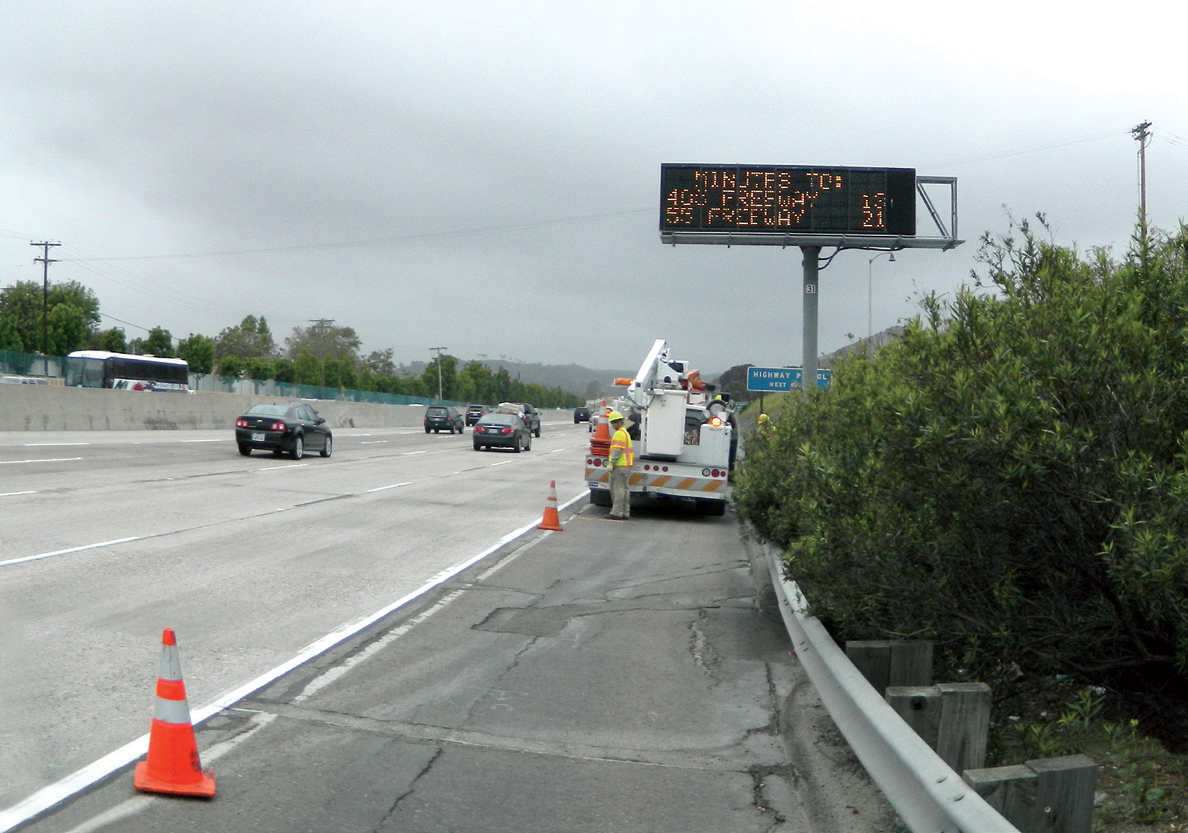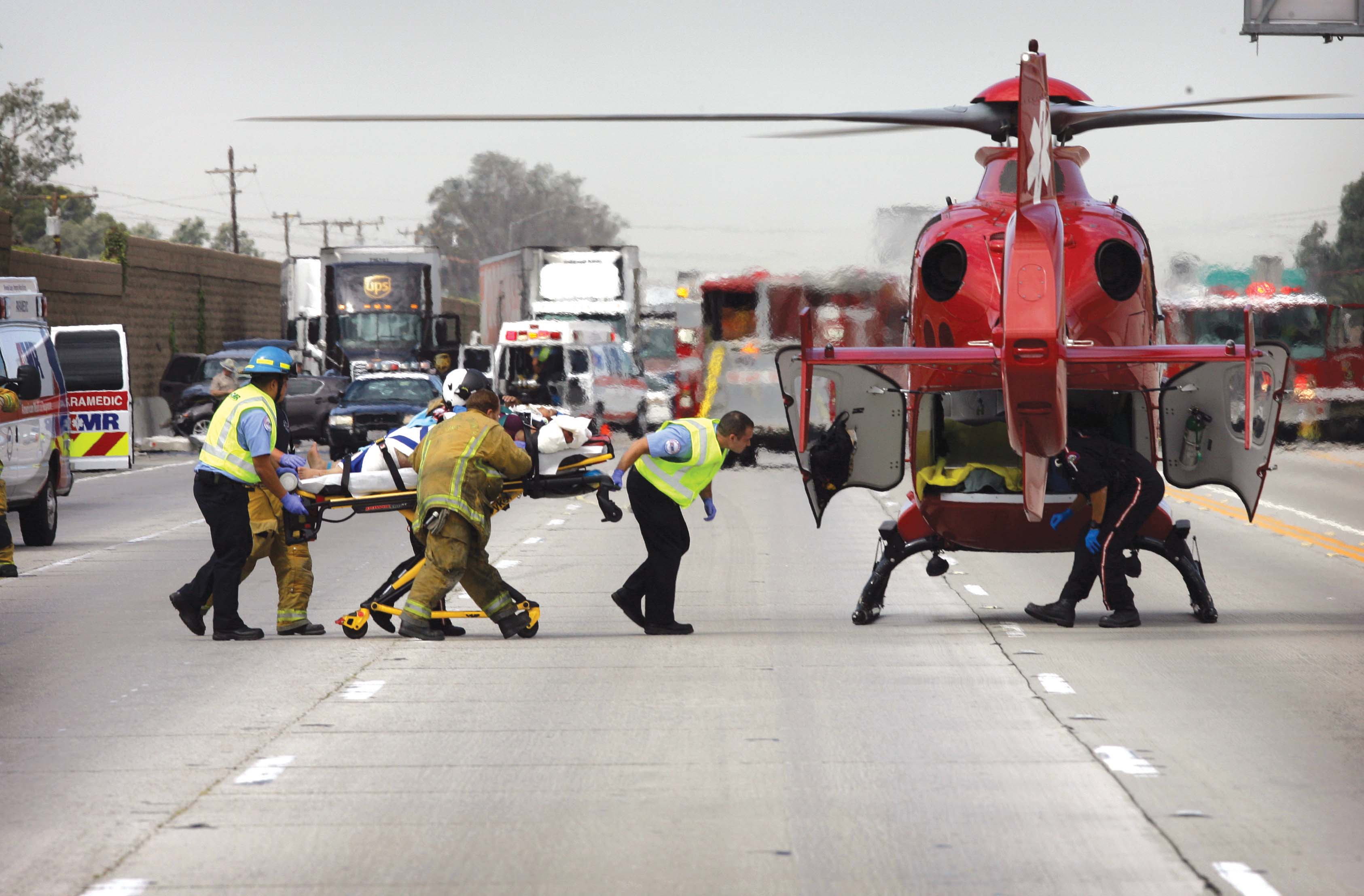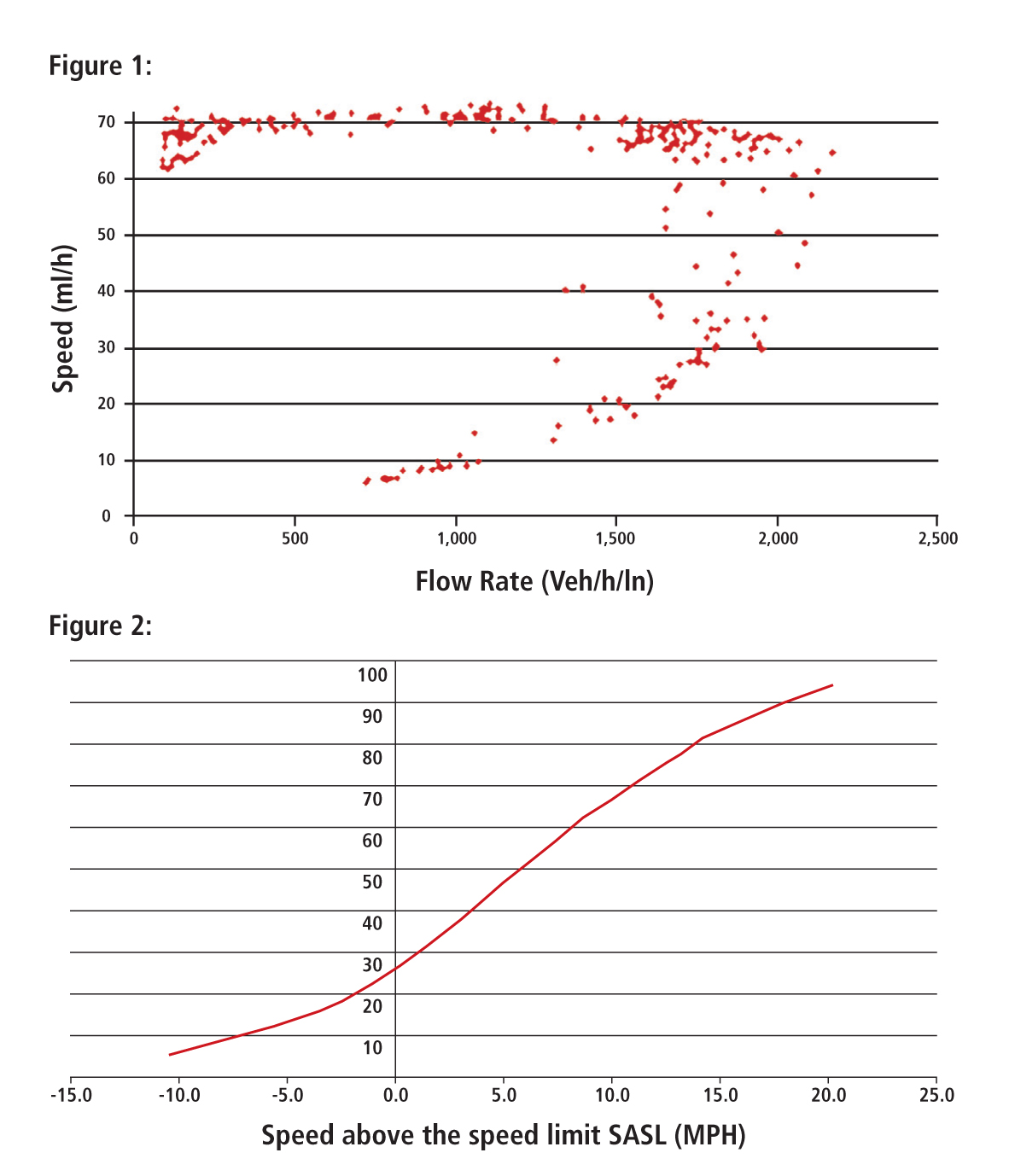A remote diagnostic system for variable message signs keeps Caltrans staff safer and makes them more efficient.
District 12 of the California Department of Transportation (Caltrans) maintains roads in Orange County including 292 route miles of freeway lanes and 240 directional miles of full-time high occupancy vehicle or carpool lanes. All of these lanes are controlled from the district’s transportation management centre (TMC) using a network of 58 variable message signs (VMS) positioned alongside or abo

Caltrans maintenance staff working adjacent to live traffic
A remote diagnostic system for variable message signs keeps Caltrans staff safer and makes them more efficient.
District 12 of the923 California Department of Transportation (Caltrans) maintains roads in Orange County including 292 route miles of freeway lanes and 240 directional miles of full-time high occupancy vehicle or carpool lanes. All of these lanes are controlled from the district’s transportation management centre (TMC) using a network of 58 variable message signs (VMS) positioned alongside or above the freeways at strategic locations.
The signs provide the drivers with traffic conditions information, travel times to popular destinations and alternate routes as well as public service announcements such as Amber Alerts which have assisted in the recovery and enhanced the safety of numerous children.
Each VMS is a complex piece of equipment composed of a 170 controller, communication links, a power source and an electronic message board, and the health of every sign must be continuously monitored and maintained by Caltrans’ staff to ensure availability.
Periodic maintenance of the signs currently requires the maintenance staff to drive to the location of each sign to observe and verify the functionality (see pic). Malfunctioning signs may also be reported by members of the public between these periodic checks.
Driving on Orange County’s congested freeways to perform these periodic checks on the signs requires many hours of the maintenance staffs’ time as well as significant amounts of fuel. In any event, once it is determined that a VMS is not functioning properly, a Caltrans maintenance engineer must drive out to the malfunctioning sign to run diagnostics, troubleshoot for known and unknown problems and provide the needed maintenance. This maintenance may include replacement of old parts but more frequently it involves resetting the 170 controller or communication links, or sometimes a simple reboot of the power system.
In interviews with Caltrans maintenance staff and engineers it became apparent that often a malfunctioning sign may only require a few minutes of attention before complete functionality is restored. The maintenance staff said the time taking driving to defective signs can take up more than 90% of their working day.
There is also another, and far more serious, problem with this method of operation. Since 1925, more than 180 Caltrans employees have been killed in the course of their duties. Many of these deaths were a direct result of vital freeway maintenance that required staff to work on the side of the road adjacent to live traffic. The hazards of this work environment were tragically illustrated when three workers were killed in one incident when a motorist failed to exercise caution while driving the section where the Caltrans staff were working.
In meetings following the incident, Caltrans’ and its maintenance crews wanted to devise a safer and more efficient way to maintain the variable message signs which would mean they spent less time stuck in traffic or being exposed to the risks of working adjacent to a live freeway. Such a system would not only cut costs but could possibly prevent further deaths and injuries if the maintenance tasks currently undertaken by the side of the freeway could be performed remotely and away from live traffic.
All of the variable message signs are controlled by, and in constant communication with, the central computer which runs the advanced transportation management system (ATMS). Therefore, it was decided to investigate the development of a VMS diagnostics module that was able to provide maintenance staff with the technology to perform much of this maintenance work remotely rather than at the roadside.
Caltrans’ maintenance staff defined the failure modes, testing and corrective measures they experience and use in the field while its Traffic System Development team envisaged, planned and developed the algorithm needed to perform these tasks remotely. This was done on a part-time basis over a four-month period and required approximately 250 hours of labour and the in-house team then worked with an outside consultant to develop and deploy the module.
The VMS diagnostics tool was conceived as a web-based application in order that it could be run from anywhere on Caltrans’ internal network. The software used to implement the diagnostics is a mix of HTML, PHP, Javascript and ANSI C along with various open source utility libraries. As the maintenance crews are not located within the District 12’s transportation management centre (TMC), there were additional security considerations to prevent any non-permitted access to the traffic management system.
The basis of the system are computer graphics interface (CGI) modules written in ANSI C which interface with the ATMS’ real-time data and control system as well as the configuration database. This allows the diagnostics procedures to be integrated into the ATMS’ operation in order that the two do not conflict.
Web server modules are written in PHP and dynamically convert the information obtained from the CGI modules into KML (Keyhole Markup Language). This language was developed for use with Google Earth in order to add geographic annotation and visualisation to two-dimensional maps and three-dimensional Earth browsers. In Caltrans’ system, the KML layers are used to show the locations of the signs and their operational status on a computerised map. When a Caltrans engineer selects a particular sign of interest, KML provides the interface window to remotely perform maintenance actions on the individual sign alongside the highway.
The top level map display is written in HTML and JavaScript using the OpenLayers mapping application program interface (API). This is similar to Google Maps API but is open source, and at the time Caltrans was developing its system OpenLayers had better support for KML features. The ATMS base map (pictured) is user selectable to work with either Google Maps or the freely downloadable OpenStreetMap and Caltrans’ system is designed to be extensible to use other industry standard maps that may be desired in the future. When a variable message sign is selected on the base map, a dialogue box is automatically generated. The dialogue boxes provide Caltrans’ maintenance staff with information to remotely diagnose any faults with the sign. The diagnostics tool also provides the capability to reset the sign, blank the display and to send a preformatted ‘TEST’ message.
According to Mort Fahrtash, senior transportation engineer manager with Caltrans, minimising the time spent driving to and from the sign locations on the freeways and reducing the time spent working alongside live carriageways was a priority. He says the VMS diagnostics module is now in use and has addressed both of these concerns. It gives maintenance workers the ability to perform many of their routine checks and repairs more safely and conveniently from any remote location where they have a connection to Caltrans’ internal network.
While the VMS diagnostics module is still in its infancy and undergoing development and improvements, it has already created a safer environment for the workforce and greatly reduced the time maintenance staff require to perform many of their duties. It now only takes five minutes to check that all of the signs are functioning correctly. Since the initial deployment of the system the number of field visits by the maintenance crews and their exposure to live traffic has been reduced by more than 35%.
Even when a defect is detected, it is now often possible to rectify the problem remotely meaning the time to repair can be reduced by as much as has 48 hours, thereby minimising downtime.
These resulting time savings translate into improved efficiency of Caltrans maintenance staff and a reduction in the overall operating costs of the VMS system and the complete managed freeway.
District 12 of the
The signs provide the drivers with traffic conditions information, travel times to popular destinations and alternate routes as well as public service announcements such as Amber Alerts which have assisted in the recovery and enhanced the safety of numerous children.
Each VMS is a complex piece of equipment composed of a 170 controller, communication links, a power source and an electronic message board, and the health of every sign must be continuously monitored and maintained by Caltrans’ staff to ensure availability.
Periodic maintenance of the signs currently requires the maintenance staff to drive to the location of each sign to observe and verify the functionality (see pic). Malfunctioning signs may also be reported by members of the public between these periodic checks.
Driving on Orange County’s congested freeways to perform these periodic checks on the signs requires many hours of the maintenance staffs’ time as well as significant amounts of fuel. In any event, once it is determined that a VMS is not functioning properly, a Caltrans maintenance engineer must drive out to the malfunctioning sign to run diagnostics, troubleshoot for known and unknown problems and provide the needed maintenance. This maintenance may include replacement of old parts but more frequently it involves resetting the 170 controller or communication links, or sometimes a simple reboot of the power system.
In interviews with Caltrans maintenance staff and engineers it became apparent that often a malfunctioning sign may only require a few minutes of attention before complete functionality is restored. The maintenance staff said the time taking driving to defective signs can take up more than 90% of their working day.
There is also another, and far more serious, problem with this method of operation. Since 1925, more than 180 Caltrans employees have been killed in the course of their duties. Many of these deaths were a direct result of vital freeway maintenance that required staff to work on the side of the road adjacent to live traffic. The hazards of this work environment were tragically illustrated when three workers were killed in one incident when a motorist failed to exercise caution while driving the section where the Caltrans staff were working.
In meetings following the incident, Caltrans’ and its maintenance crews wanted to devise a safer and more efficient way to maintain the variable message signs which would mean they spent less time stuck in traffic or being exposed to the risks of working adjacent to a live freeway. Such a system would not only cut costs but could possibly prevent further deaths and injuries if the maintenance tasks currently undertaken by the side of the freeway could be performed remotely and away from live traffic.
All of the variable message signs are controlled by, and in constant communication with, the central computer which runs the advanced transportation management system (ATMS). Therefore, it was decided to investigate the development of a VMS diagnostics module that was able to provide maintenance staff with the technology to perform much of this maintenance work remotely rather than at the roadside.
Caltrans’ maintenance staff defined the failure modes, testing and corrective measures they experience and use in the field while its Traffic System Development team envisaged, planned and developed the algorithm needed to perform these tasks remotely. This was done on a part-time basis over a four-month period and required approximately 250 hours of labour and the in-house team then worked with an outside consultant to develop and deploy the module.
The VMS diagnostics tool was conceived as a web-based application in order that it could be run from anywhere on Caltrans’ internal network. The software used to implement the diagnostics is a mix of HTML, PHP, Javascript and ANSI C along with various open source utility libraries. As the maintenance crews are not located within the District 12’s transportation management centre (TMC), there were additional security considerations to prevent any non-permitted access to the traffic management system.
The basis of the system are computer graphics interface (CGI) modules written in ANSI C which interface with the ATMS’ real-time data and control system as well as the configuration database. This allows the diagnostics procedures to be integrated into the ATMS’ operation in order that the two do not conflict.
Web server modules are written in PHP and dynamically convert the information obtained from the CGI modules into KML (Keyhole Markup Language). This language was developed for use with Google Earth in order to add geographic annotation and visualisation to two-dimensional maps and three-dimensional Earth browsers. In Caltrans’ system, the KML layers are used to show the locations of the signs and their operational status on a computerised map. When a Caltrans engineer selects a particular sign of interest, KML provides the interface window to remotely perform maintenance actions on the individual sign alongside the highway.
The top level map display is written in HTML and JavaScript using the OpenLayers mapping application program interface (API). This is similar to Google Maps API but is open source, and at the time Caltrans was developing its system OpenLayers had better support for KML features. The ATMS base map (pictured) is user selectable to work with either Google Maps or the freely downloadable OpenStreetMap and Caltrans’ system is designed to be extensible to use other industry standard maps that may be desired in the future. When a variable message sign is selected on the base map, a dialogue box is automatically generated. The dialogue boxes provide Caltrans’ maintenance staff with information to remotely diagnose any faults with the sign. The diagnostics tool also provides the capability to reset the sign, blank the display and to send a preformatted ‘TEST’ message.
According to Mort Fahrtash, senior transportation engineer manager with Caltrans, minimising the time spent driving to and from the sign locations on the freeways and reducing the time spent working alongside live carriageways was a priority. He says the VMS diagnostics module is now in use and has addressed both of these concerns. It gives maintenance workers the ability to perform many of their routine checks and repairs more safely and conveniently from any remote location where they have a connection to Caltrans’ internal network.
While the VMS diagnostics module is still in its infancy and undergoing development and improvements, it has already created a safer environment for the workforce and greatly reduced the time maintenance staff require to perform many of their duties. It now only takes five minutes to check that all of the signs are functioning correctly. Since the initial deployment of the system the number of field visits by the maintenance crews and their exposure to live traffic has been reduced by more than 35%.
Even when a defect is detected, it is now often possible to rectify the problem remotely meaning the time to repair can be reduced by as much as has 48 hours, thereby minimising downtime.
These resulting time savings translate into improved efficiency of Caltrans maintenance staff and a reduction in the overall operating costs of the VMS system and the complete managed freeway.











